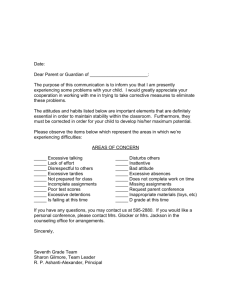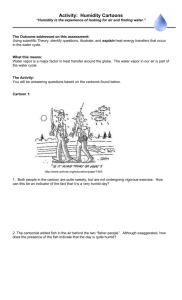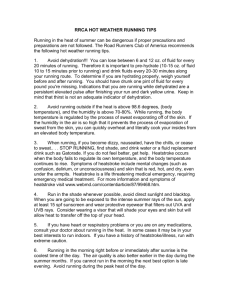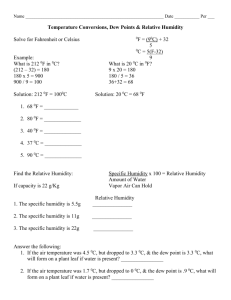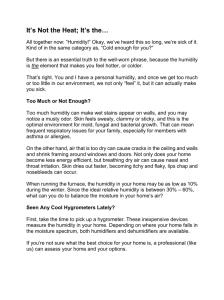We`ve all heard that it isn`t the heat but the humidity that makes you
advertisement
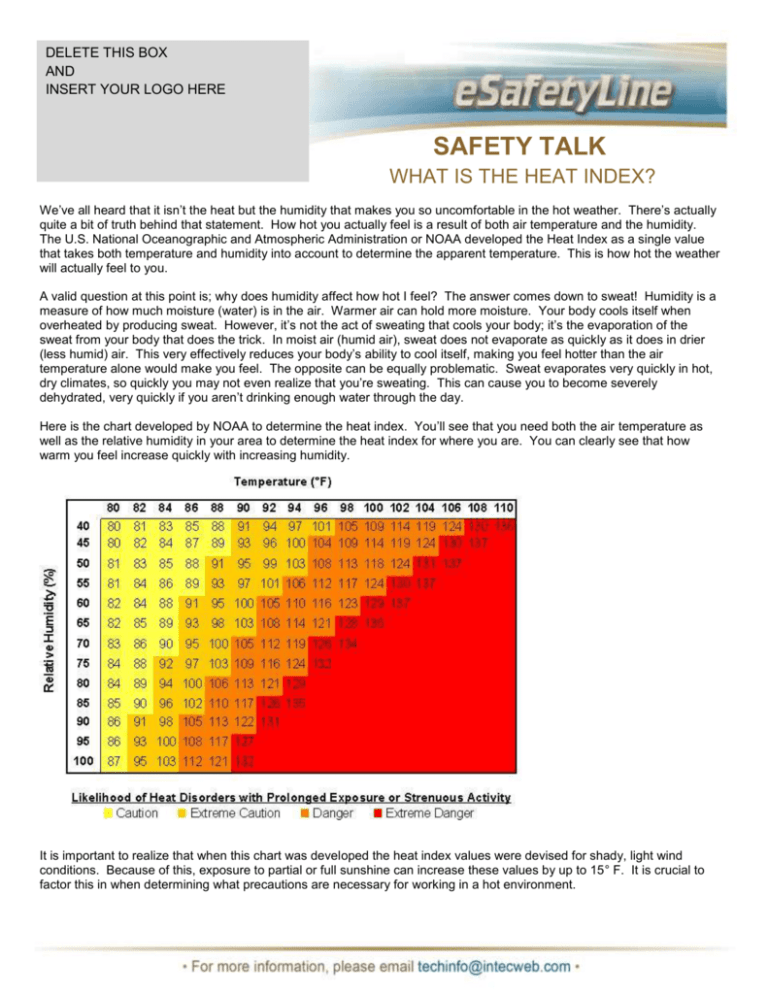
DELETE THIS BOX AND INSERT YOUR LOGO HERE SAFETY TALK WHAT IS THE HEAT INDEX? We’ve all heard that it isn’t the heat but the humidity that makes you so uncomfortable in the hot weather. There’s actually quite a bit of truth behind that statement. How hot you actually feel is a result of both air temperature and the humidity. The U.S. National Oceanographic and Atmospheric Administration or NOAA developed the Heat Index as a single value that takes both temperature and humidity into account to determine the apparent temperature. This is how hot the weather will actually feel to you. A valid question at this point is; why does humidity affect how hot I feel? The answer comes down to sweat! Humidity is a measure of how much moisture (water) is in the air. Warmer air can hold more moisture. Your body cools itself when overheated by producing sweat. However, it’s not the act of sweating that cools your body; it’s the evaporation of the sweat from your body that does the trick. In moist air (humid air), sweat does not evaporate as quickly as it does in drier (less humid) air. This very effectively reduces your body’s ability to cool itself, making you feel hotter than the air temperature alone would make you feel. The opposite can be equally problematic. Sweat evaporates very quickly in hot, dry climates, so quickly you may not even realize that you’re sweating. This can cause you to become severely dehydrated, very quickly if you aren’t drinking enough water through the day. Here is the chart developed by NOAA to determine the heat index. You’ll see that you need both the air temperature as well as the relative humidity in your area to determine the heat index for where you are. You can clearly see that how warm you feel increase quickly with increasing humidity. It is important to realize that when this chart was developed the heat index values were devised for shady, light wind conditions. Because of this, exposure to partial or full sunshine can increase these values by up to 15° F. It is crucial to factor this in when determining what precautions are necessary for working in a hot environment. DELETE THIS BOX AND INSERT YOUR LOGO HERE SAFETY TALK WHAT IS THE HEAT INDEX? Extreme heat advisories are a regular occurrence in the warm weather months and are typically announced during local weather broadcasts on both TV and radio. These advisories are issued by NOAA to indicate when there will be excessive, extended heat in an area. They are based on the predicted heat index values. The following are NOAA’s categories for such advisories: Excessive Heat Outlook would be issued when the potential exists for extended excessive heat (heat index of 105110 °F) over the next 3- 7 days. This gives you time to check on supplies like extra water coolers. Excessive Heat Watch would be issued when excessive heat could occur with the next 24 to 72 hours, but the timing is uncertain. Excessive Heat Warning is issued when the heat index will be high enough to be life threatening in the next 24 hours. This warning indicates that the excessive heat is imminent or has a very high probability of occurring. Excessive Heat Advisory is similar to an Excessive Heat Warning but less serious. This is issued when the heat index could be uncomfortable or inconvenient but not life threatening if proper precautions are taken. Following these advisories could be the difference between life and death and need to be adhered to while not on the job as well to keep you and your family through the warm weather months. DISCUSSION QUESTIONS What is used to figure out the Heat Index? Why does humid air make you feel warmer faster than drier air? DELETE THIS BOX AND INSERT YOUR LOGO HERE MEETING / TRAINING ATTENDANCE ROSTER COMPANY: _______________________________________ _____ SAFETY MEETING JOB/DEPT: ________________________________________ _____ SAFETY TRAINING DATE: ____/____/_______ TIME: _________ TOPICS ADDRESSED: ______________________________________________________________________________________ EMPLOYEE'S SIGNATURES: ______________________________ ______________________________ ______________________________ ______________________________ ______________________________ ______________________________ ______________________________ ______________________________ ______________________________ ______________________________ ______________________________ ______________________________ ______________________________ ______________________________ ______________________________ ______________________________ ______________________________ ______________________________ ______________________________ ______________________________ ______________________________ EMPLOYEE SUGGESTIONS AND RECOMMENDATIONS: ______________________________________________________ ____________________________________________________________________________________________________________ ____________________________________________________________________________________________________________ ACTION TAKEN: __________________________________________________________________________________________ ____________________________________________________________________________________________________________ ____________________________________________________________________________________________________________ _______________________________________________ Supervisor's Signature _______________________________________________ Safety Coordinator's Signature _____/_____/_____ Date _____/_____/_____ Date
